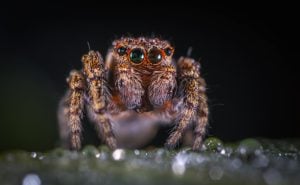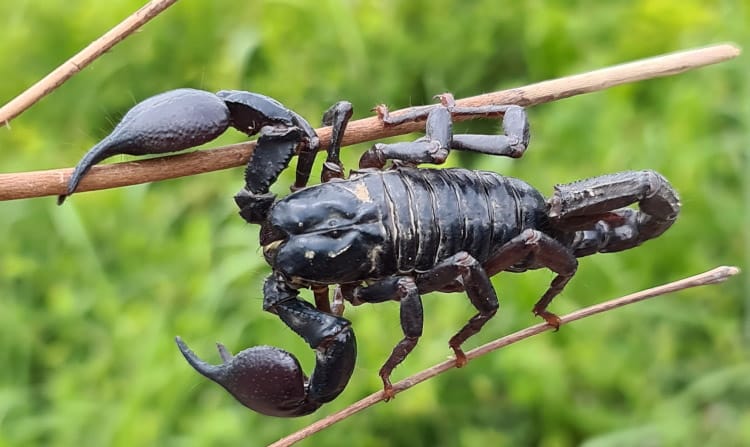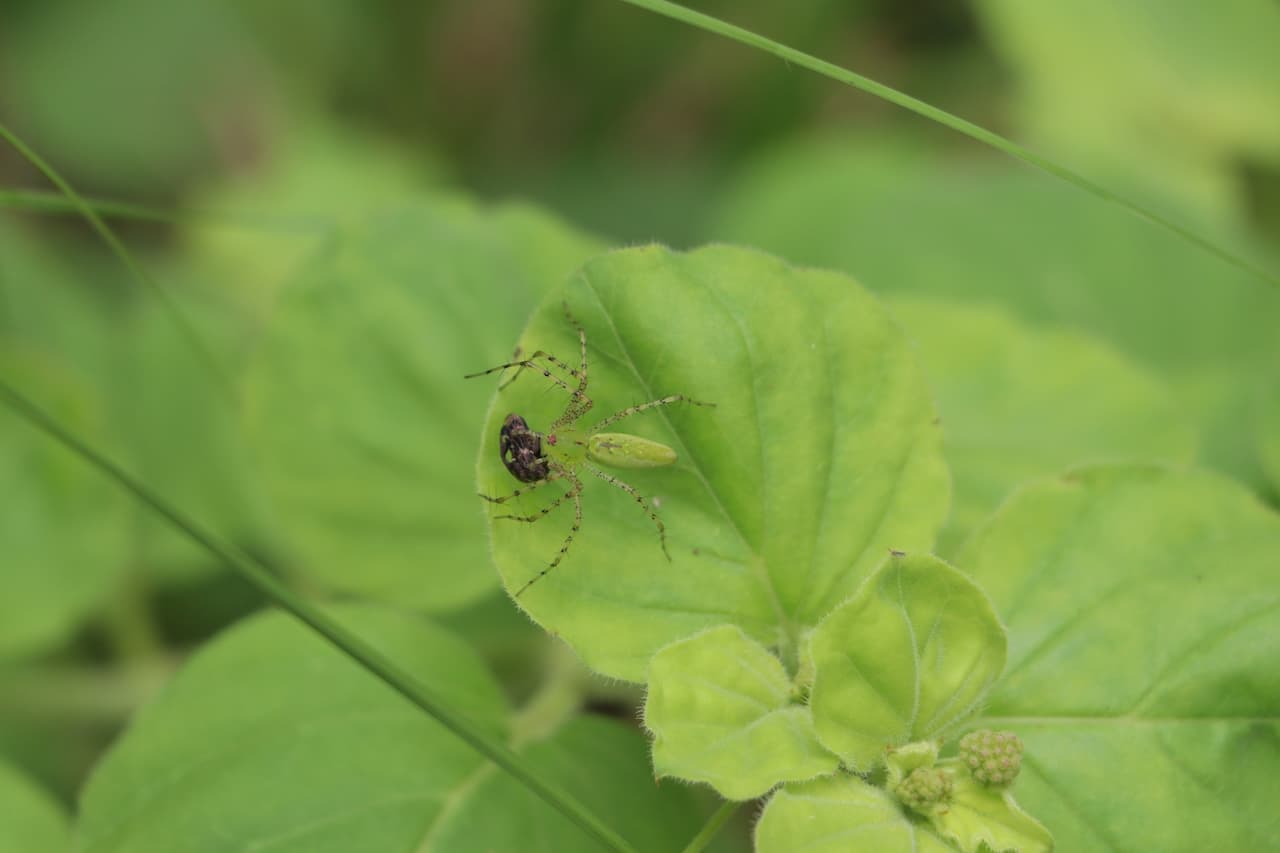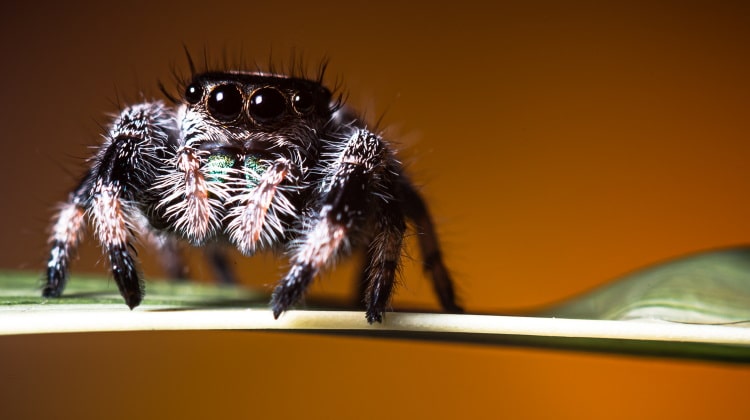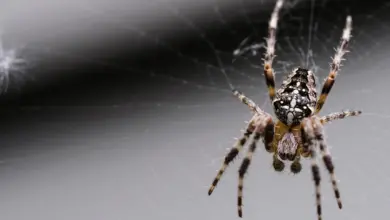History of Arachnology
History of Arachnology: How Spiders Became More Than Just Insects
The history of arachnology and how it evolved over the centuries is a fascinating read in itself. Learn the path that spiders took from being just another insect to a separate class: the arachnids. Arachnology is the scientific study of arachnids – a diverse class of invertebrates, including spiders, scorpions, ticks, mites, and other related organisms.
Humans have interacted with and been fascinated by arachnids for thousands of years. In this article, we will explore the history and development of arachnology from ancient times through the modern era.
The scientific study of spiders, as with so much of zoology, is considered to have started with Aristotle (385-322) BC.
However, as he incorrectly contradicts Democritus’ claim that spiders produce the silk from within their body as a “superfluity or excretion” it might be more honest to give Democritus the title of the father of Arachnology.
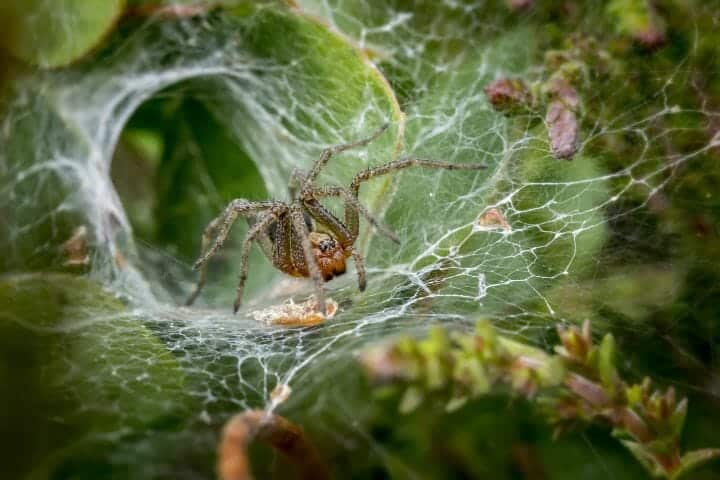
In his Historia Animalia he included spiders with the insects, he divided them according to whether or not they spun webs and then on the basis of the types of webs they spun.
He also reported on their web-building techniques and reproduction.
Not everything Aristotle recorded was correct, however, it was to be more than 1,800 years before anybody else wrote anything intelligent about spider biology.
The first people to write some fresh observations on spiders, rather than just repeating the errors that had been handed down from translations of Pliny (Ancient Rome) and Aristotle, were zoologists like Robert Hooke, Martin Lister, Antonie van Leeuwhenhoek, John Ray, and Jan Swammerdam. All of them were born between 1600 and 1700.
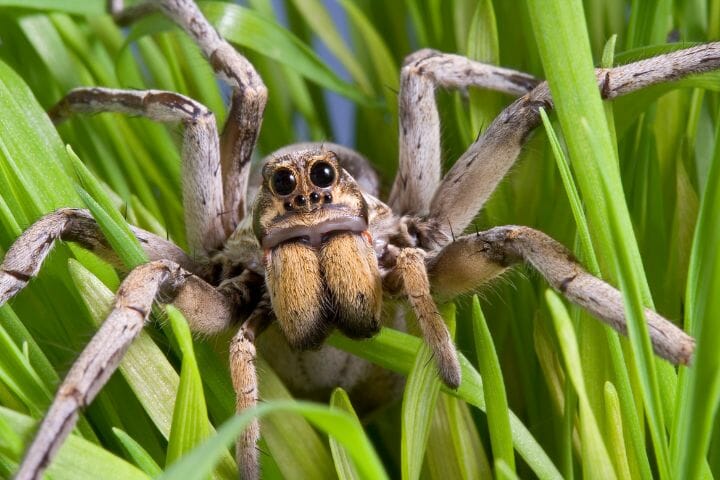
Carolus Linnaeus is normally considered to be the father of the binomial (two names) system we still use to name animals.
However, we now know that Svenska Spindlar (Swedish Spiders) published in 1756 by Carl Clerck was actually the first zoological work to use a binomial naming system.
He described 68 spiders, whereas Linnaeus’ Systema Naturae 10th Ed. published the following year described only 37 species.
Hence spiders, as far as I know, are the only group of animals to have their classification predate Linnaeus’ great work.

The first ever Professor of Entomology, the Frenchman Pierre Latreille (1762-1833) was the first to give spiders a number of genera within their own family, but they were still considered as insects.
It was left to the German Carl Ludwig Koch to give the spiders the writing to be a class in their own name and so the Arachnida came into existence in the middle of the 19th century.
Following him we find names like Blackwall, Hahn, Keyserling, and Koch developing the methods of classification, taking more notice of the smaller species and using characteristics such as the number and arrangement of the eyes and the shape of the male palpal organ.
From this time on the number of names of scientists who did great work on spiders started to increase considerably and now there are thousands of books on spiders around the world.
Many of these books will be hidden in the back rooms of your library, these old books are often fascinating reading so why not ask your librarian to dig some of them out for you!
Arachnids in Ancient History
Arachnids have long featured in human culture, mythology, and symbolism across civilizations. Ancient Egyptians used the image of the scorpion in hieroglyphics and art, viewing it as a protector against evil. Spider symbols likewise represented wisdom and creativity for Egyptians.
Ancient Greeks told tales of Arachne, a skilled mortal weaver who was turned into the first spider by the goddess Athena. Greek respect for spiders’ intricate and beautiful webs merged with fears of spiders as venomous killers.
The traces of arachnids also appear in records from ancient China, Mesopotamia, the Indus Valley, and the Americas.
Early humans recognized the dangers posed by the bites and stings of arachnids. Scorpion stings are described in one of the earliest known medical texts, an ancient Egyptian papyrus dating from 1550 BCE. Ancient Greek physicians similarly identified spider bites and how to treat them.
Early Scientific Study
As scientific thinking emerged, natural philosophers and pioneering researchers began describing and cataloging arachnid species. In the 4th century BCE, Greek philosopher Aristotle wrote his observations on spiders and scorpions, speculating on their anatomy and behavior.
In the 11th century CE, the polymath Avicenna (Ibn Sina) conducted dissections of spiders and other arthropods, making key anatomical observations.
The 13th-century naturalist Fredericus II further studied scorpion venom and its medical effects. Conrad Gessner published the first known book focused on arachnids in the 1500s.
Early microscopy in the 17th century opened new arachnid study avenues. The pioneering microscopist Robert Hooke used magnified lenses to examine insects and spiders, documenting spider fangs and other minute structures.
Antonie van Leeuwenhoek made detailed observations of mites and spiders, estimating populations and reproductive rates.
18th & 19th Century Developments
Carl Linnaeus established the taxonomic classification system that enabled the scientific categorization of thousands of species in the 18th century. This allowed arachnids to be divided into orderly groups and families based on shared traits.
Key contributors to arachnology in the late 18th and early 19th centuries included Charles Athanase Walckenaer, Francois Marie Daudin, and Pierre André Latreille.
They painstakingly described numerous new spiders and other arachnid species in publications that helped establish arachnology as a distinct field.
Darwin’s evolutionary theories in the mid-1800s influenced arachnid studies. Researchers increasingly analyzed topics like arachnid behavior, adaptations, and distributions in relation to environments and selective pressures.
- Thorell emerged as a pioneer in applying Darwin’s ideas to arachnology, proposing evolutionary trees to explain arachnid diversity.
Modern Progress
Technological advances accelerated arachnology progression through the 20th century. Photographic documentation methods let scientists closely record and compare arachnid anatomy and behaviors. Electron microscopy opened microscopic worlds at much finer resolutions.
Biochemical analyses exposed the composition of venoms, silks, and other natural arachnid products. Advances in genetics fostered new phylogeny insights and understanding of evolutionary divergences. Fossil discoveries and geological dating shed light on ancient arachnids and their evolutionary origins.
Leading arachnology institutions and societies were established to consolidate knowledge, resources, and experts in the field. These include the American Arachnological Society, the British Arachnological Society, and the International Society of Arachnology founded in 1982.
Journals such as the Journal of Arachnology provided specialized peer-reviewed outlets for disseminating discoveries.
Global communication and collaboration networks allowed rapid sharing of insights between researchers across continents. Online biodiversity databases compile expansive information on species distributions worldwide.
Notable Arachnologists
Many scientists contributed key breakthroughs and bodies of work that greatly advanced arachnology over the centuries. Some most significant individuals include:
Carl Ludwig Koch (1778–1857) – Described over 1,000 new arachnid species. Developed new spider taxonomy.
Charles Athanase Walckenaer (1771–1852) – Named and described hundreds of spider species over a 50-year career. Published major works Faune parisienne and Histoire naturelle des Insectes.
Alexander Petrunkevitch (1875-1964) – Prolific researcher publishing over 170 works. Advanced understanding of spider circulatory, respiratory, neurological, sensory and reproductive systems through dissection.
Willis J. Gertsch (1906-1998) – Described over 1,000 new North American spider species and mentored younger arachnologists.
Herbert Walter Levi (1921-2014) – Curator at the Museum of Comparative Zoology for over 50 years. Described hundreds of orb-weaver spiders and completed research across the Americas, Africa, Asia, and Australia.
Jerome Constant (1937-2015) – Described over 1,000 new spider species across works spanning behavioral ecology, reproductive strategies, species distributions, and evolutionary mechanisms.
Norman I. Platnick (1951- ) – Curator at the American Museum of Natural History who has described over 600 new spider species and established expansive biodiversity online databases.
Jonathan Coddington (1953- ) – Current arachnology curator at the Smithsonian National Museum of Natural History. Has authored over 400 publications on new spider and arachnid species.
Modern Research Areas
Some key areas driving current arachnological research include:
- Biodiversity surveys and species discovery – particularly in the tropics which harbor high arachnid diversity. New technologies facilitate rapid sampling, documentation, and genetic analysis of specimens.
- Biochemistry and pharmacology – isolating arachnid venoms, silks, and toxins to investigate potential bioinsecticide or biomedical applications.
- Ecology and conservation – analyzing arachnid habitats, behaviors, environmental interactions, and vulnerabilities to inform conservation priorities. Climate change effects are a focus.
- Genomics and phylogenetics – DNA sequencing helps construct evolutionary relationships, uncover divergences, and clarify taxonomies between arachnid groups.
- Paleontology – fossil specimens give clues to ancient forms, uncover extinct lineages, and show evolutionary transitions. Amber-preserved arachnids reveal fine details.
- Bioinspired engineering – properties of spider silk, adhesives, sensory hairs, hydraulics, and more provide models for creating new synthetic materials and robotics.
Continued developments in technology and collaborative information networks will likely accelerate the rate of discoveries and knowledge growth in arachnology in the 21st century.
Arachnology’s Impact
While still a specialized niche field, arachnological research has provided many benefits for science and society:
- Uncovered the spectacular diversity of arachnids – over 120,000 named species and counting. New species descriptions enrich biodiversity records.
- Improved understanding of evolutionary mechanisms, ecologies, behaviors, adaptations, and conserved traits across arachnids.
- Identified medically significant venom toxins as well as those showing promise for uses like pest control or drug development.
- Revealed arachnids’ importance to ecosystems in pest control, pollination, and nutrient cycling roles. Highlights conservation needs.
- Provided insights for bioinspired design innovations based on spider silk, adhesives, vision, hydraulics, and more.
- Fostered natural history institutions, biodiversity repositories, and resources for scientific investigation and public education.
After centuries of study, arachnids continue inspiring human curiosity and making unique contributions to scientific knowledge. As technology progresses, arachnology has even greater potential to reveal hidden biological marvels, inform conservation, and solve biomaterial engineering challenges in the future.
Conclusion
From ancient mythologies to pioneering microscopy to modern molecular methods, the scientific pursuit of understanding arachnids has uncovered an amazing diversity of forms and functions.
While arachnology originated in curiosity about spiders and scorpions, research has expanded to encompass mites, ticks, harvestmen, and more, illuminating the evolutionary interconnections between these eight-legged creatures.
Today, over a hundred thousand arachnid species have been discovered and named largely thanks to centuries of accumulating arachnological knowledge.
As technology and exploration continue revealing our living world, arachnology retains immense scope for uncovering new wonders that further illuminate the intricacies of life on Earth.

